Menu
Math Lesson 1.3.4 - Division
Please provide a rating, it takes seconds and helps us to keep this resource free for all to use
Welcome to our Math lesson on Division, this is the fourth lesson of our suite of math lessons covering the topic of Operations with Numbers and Properties of Operations, you can find links to the other lessons within this tutorial and access additional Math learning resources below this lesson.
Division
Division is the inverse operation of multiplication. We apply division when we want to cut a quantity into equal parts.
Division is the inverse operation of multiplication. We use the symbol (÷) to represent division in a mathematical expression. The original quantity is known as dividend, the number that divides the original quantity into equal parts is called the divisor while the result of division is called quotient.
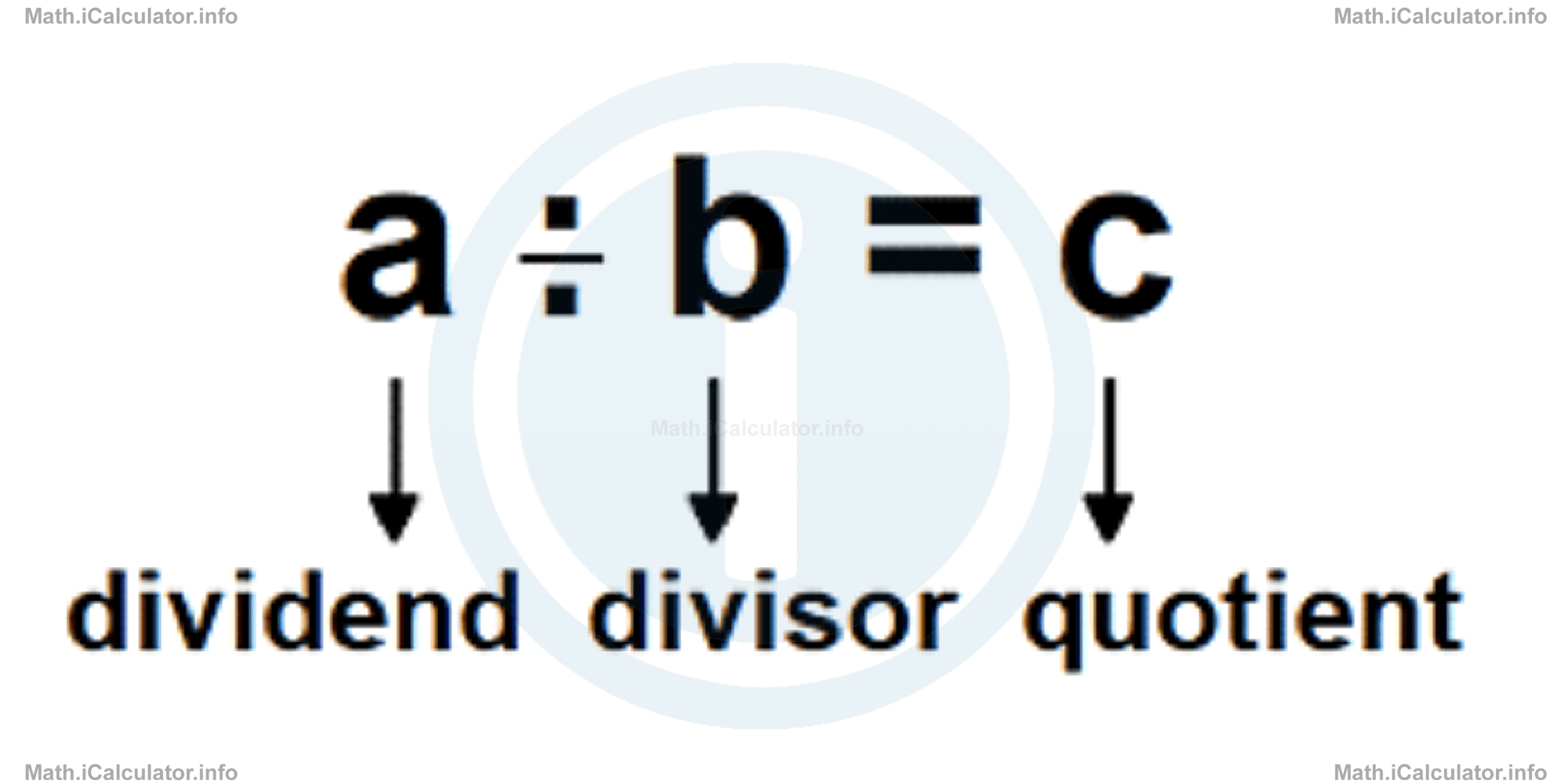
For example, in the division
78 is the dividend, 6 is the divisor and 13 is the quotient.
Properties of division
Division does not have the closure property. For example, if we divide two natural numbers in many cases we obtain a rational number as a result. Thus, if we divide 6 and 18, the result is 6/18, which after simplification becomes 1/3, which is a rational number.
Division does not have the commutative property, as if we switch the place to dividend and divisor, we don't obtain the same quotient anymore. For example, 20 ÷ 5 is not equal to 5 ÷ 20; in the first case the quotient is 4, while in the second case, the quotient is 1/4.
Division does not have the associative property, as if we start calculating the division of a double division expression from the second number, we do not obtain the same result as if we start doing operations from left to right. For example, if we have
the result is 4, because 120 ÷ 6 = 20 and 20 ÷ 5 = 4. If we try to associate 6 and 5, we obtain the wrong result, as 6 ÷ 5 = 1.2 and 120 ÷ 1.2 = 100.
Division does not have the distributive property. Let's use an example to clarify this point.
If we have the expression 72 ÷ (9 + 3), we can try to apply the distributive property of division to find the result, in a similar way as we did in multiplication. We have
= 72 ÷ 9 + 72 ÷ 3
= 8 + 24
= 32
However, this result is wrong because normally
= 72 ÷ 12
= 6
1. Divisive identity property
The number 1 is the identity element for division because any number divided by 1 gives the same number as a result. In symbols we can write
2. The remainder of division
As we covered earlier, when we divide two natural numbers, the result is not always a natural number. However, if we want to keep writing the result as a natural number, we write the closest value as quotient and also the remainder of the division inside brackets, i.e. the number left from the division operation.
For example, when we divide 42 and 5, the result (quotient) is close to 8, as 8 × 5 = 40. However, here there is a remainder equal to 2, as 42 - 40 = 2. We write this division as
In general, we write a division of natural numbers as
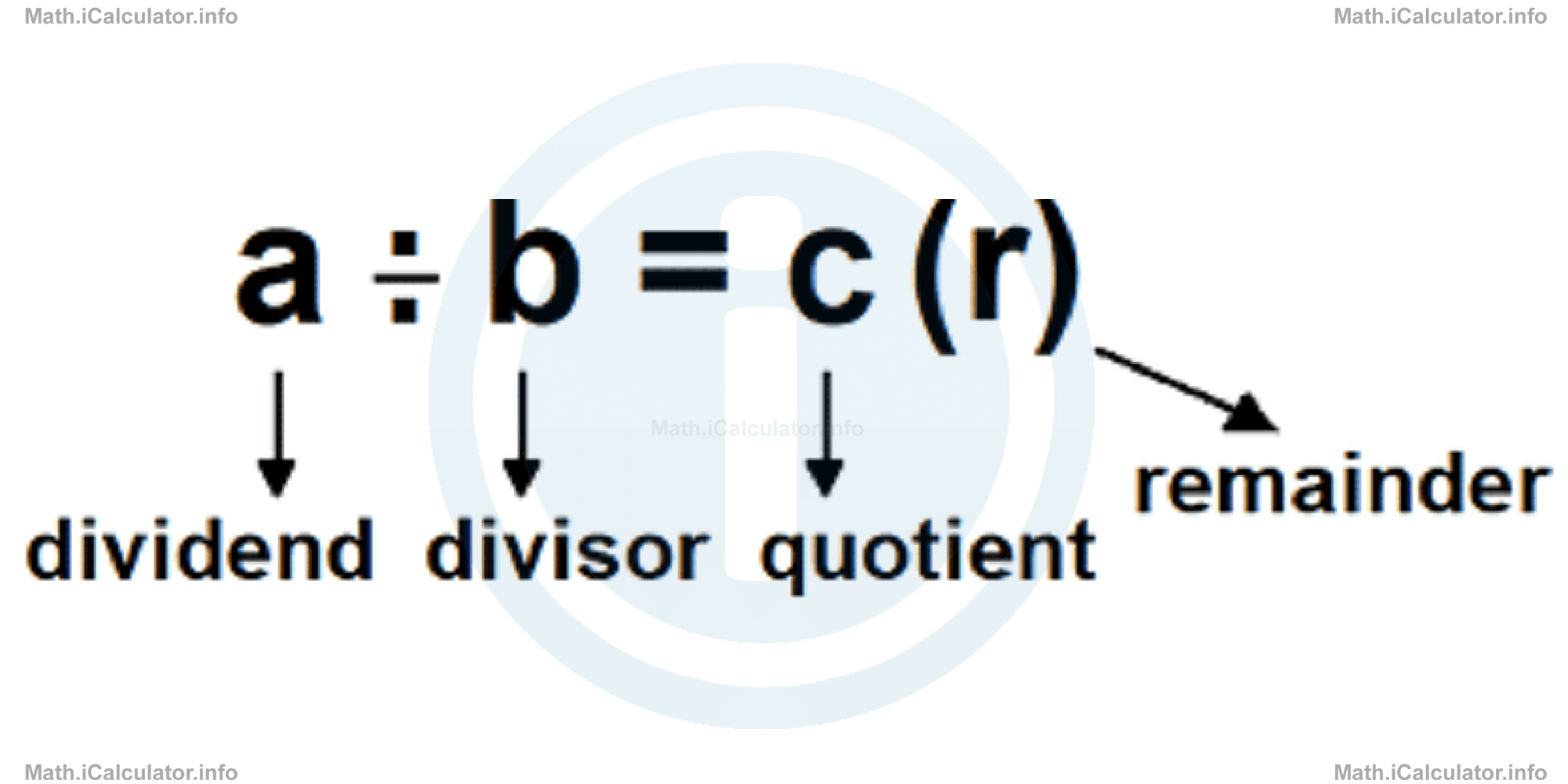
It is clear that the remainder is always smaller than the divisor; otherwise, we must increase the value of the quotient by 1.
We can write the inverse of the above rule by turning division into multiplication as
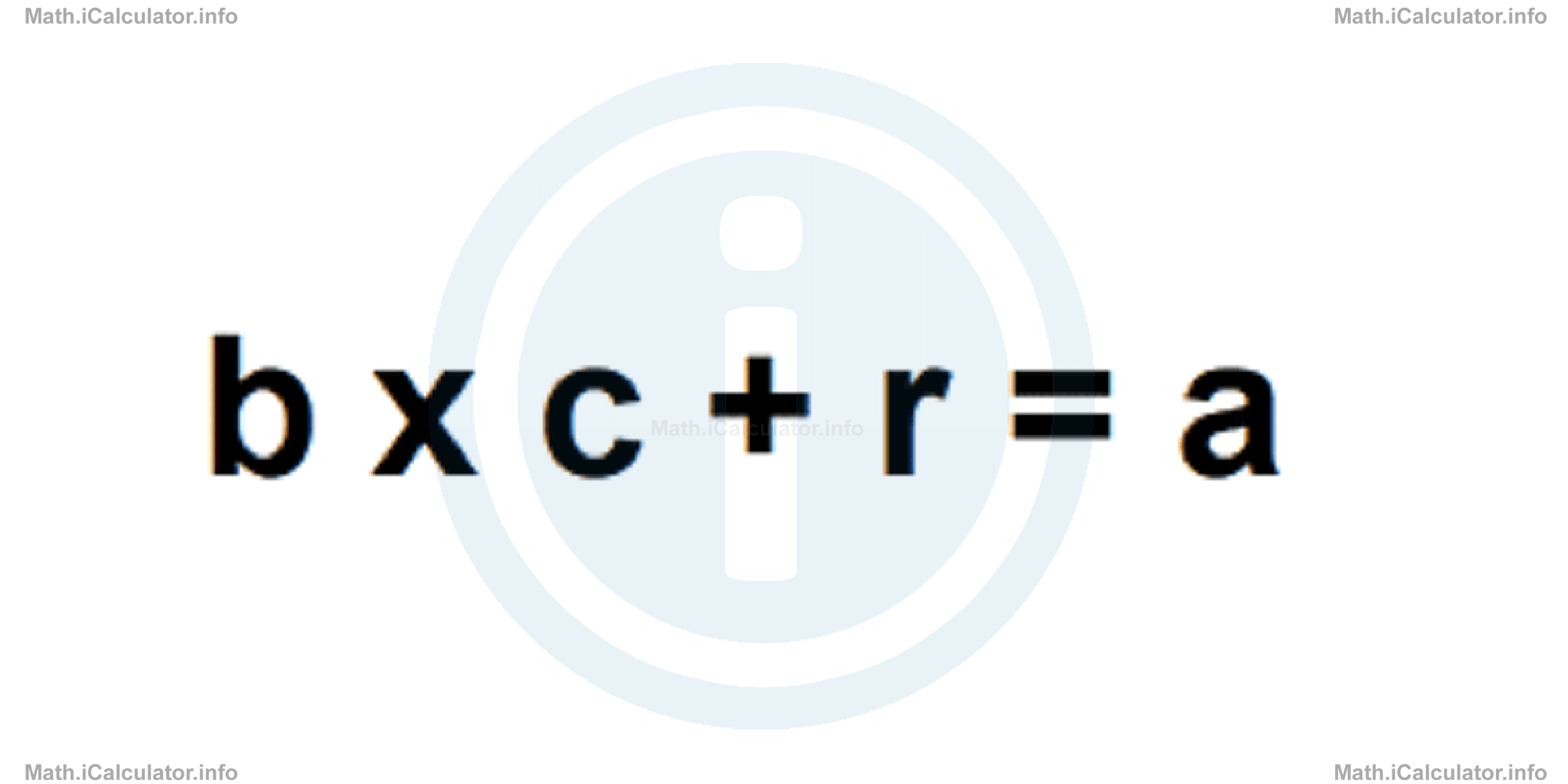
For example, since 37 ÷ 4 = 9 (1), then 4 × 9 + 1 = 37.
Example 7
Find the quotient and remainder in each of the following divisions.
b. 83 ÷ 12 =
c. 147 ÷ 8 =
Solution 7
- We have 56 ÷ 9 = 6 (2)because 9 × 6 + 2 = 54 + 2 = 56.
- We have 83 ÷ 12 = 6 (11)because 12 × 6 + 11 = 72 + 11 = 83.
- We have 147 ÷ 8 = 18 (3)because 8 × 18 + 3 = 144 + 3 = 147.
How to make division easier
Division is much easier using the following method:
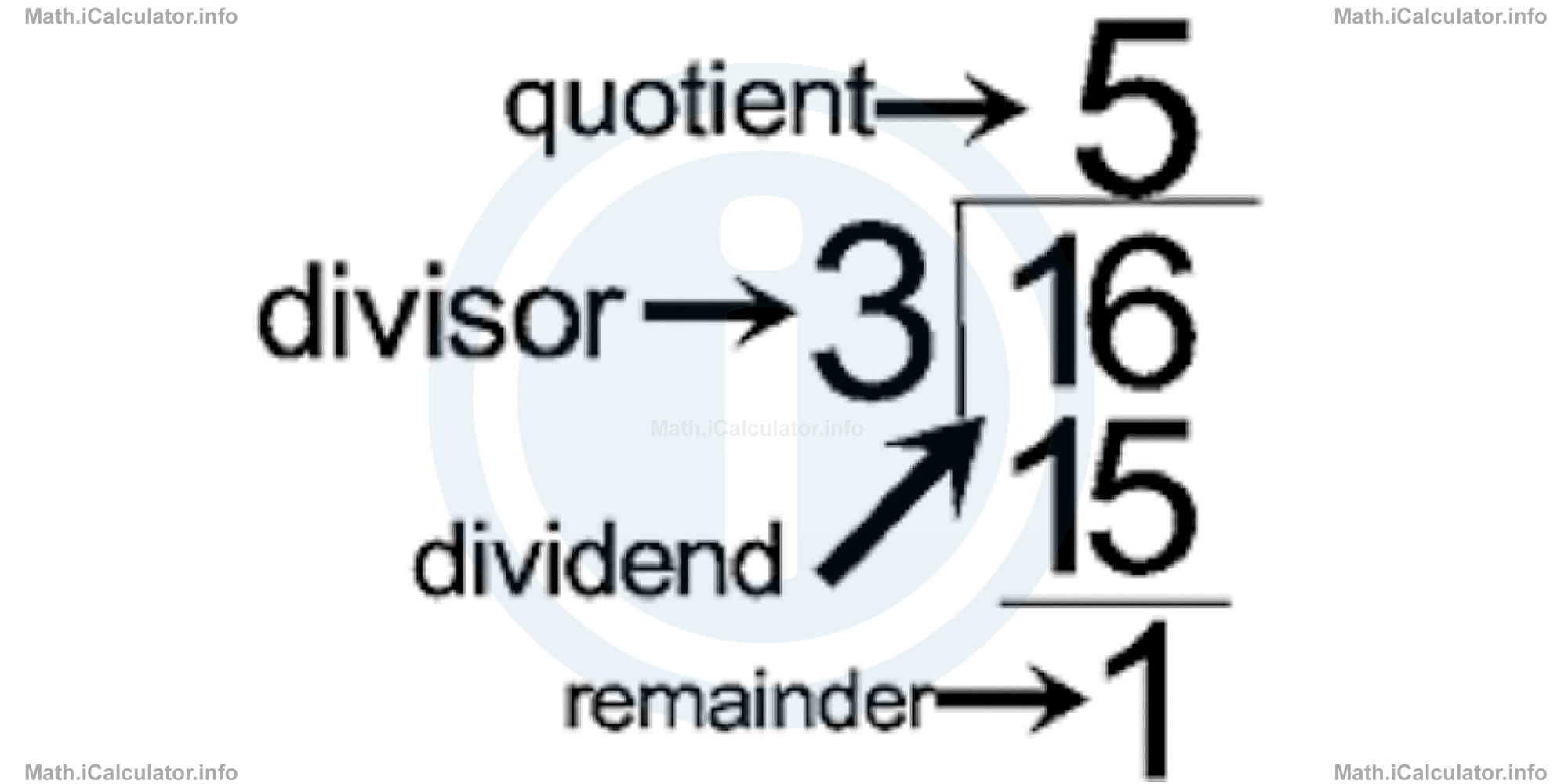
First we write the dividend, then we write the divisor on its left. The quotient obtained after dividing the dividend and divisor is written above the dividend. The product of quotient and divisor is written below the dividend, so that we subtract it from the dividend to obtain the remainder, which is placed in the bottom section. This procedure can be repeated multiple times in longer divisions, as in the following example.
Example 8
Calculate the quotient and remainder of the following division
Solution 8
First, we take from the dividend the minimum digits sufficient to make a division. Hence, we take only the first three digits from the dividend and divide them by the divisor.
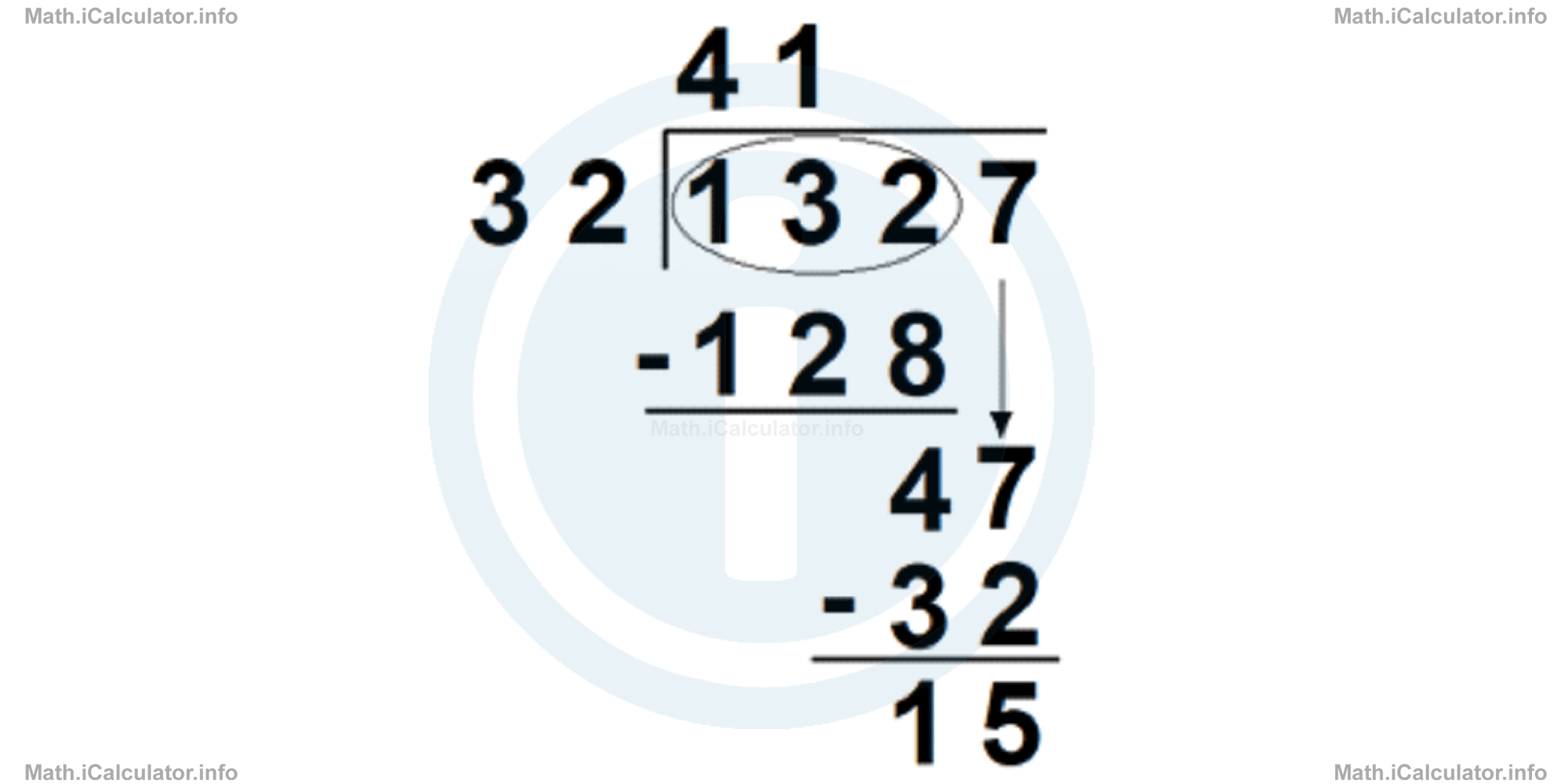
More specifically, we first divide 132 by 32. The quotient is 4 and the remainder is 4 as well. We write these two numbers in the places where they should be. Then, we write the last digit of the dividend on the right of remainder. In this way, we obtain a new dividend, 47. When we divide 47 by 32, the new quotient is 1, a number which we write on the right of the original quotient. The new remainder therefore is 47 - 32 = 15. At this point, we have no more numbers to continue the procedure, so the final result of the division 1327 ÷ 32 is: quotient = 41 and remainder = 15, i.e.
We can do the Proof: of this solution by calculating the value of the expression
Thus, we have
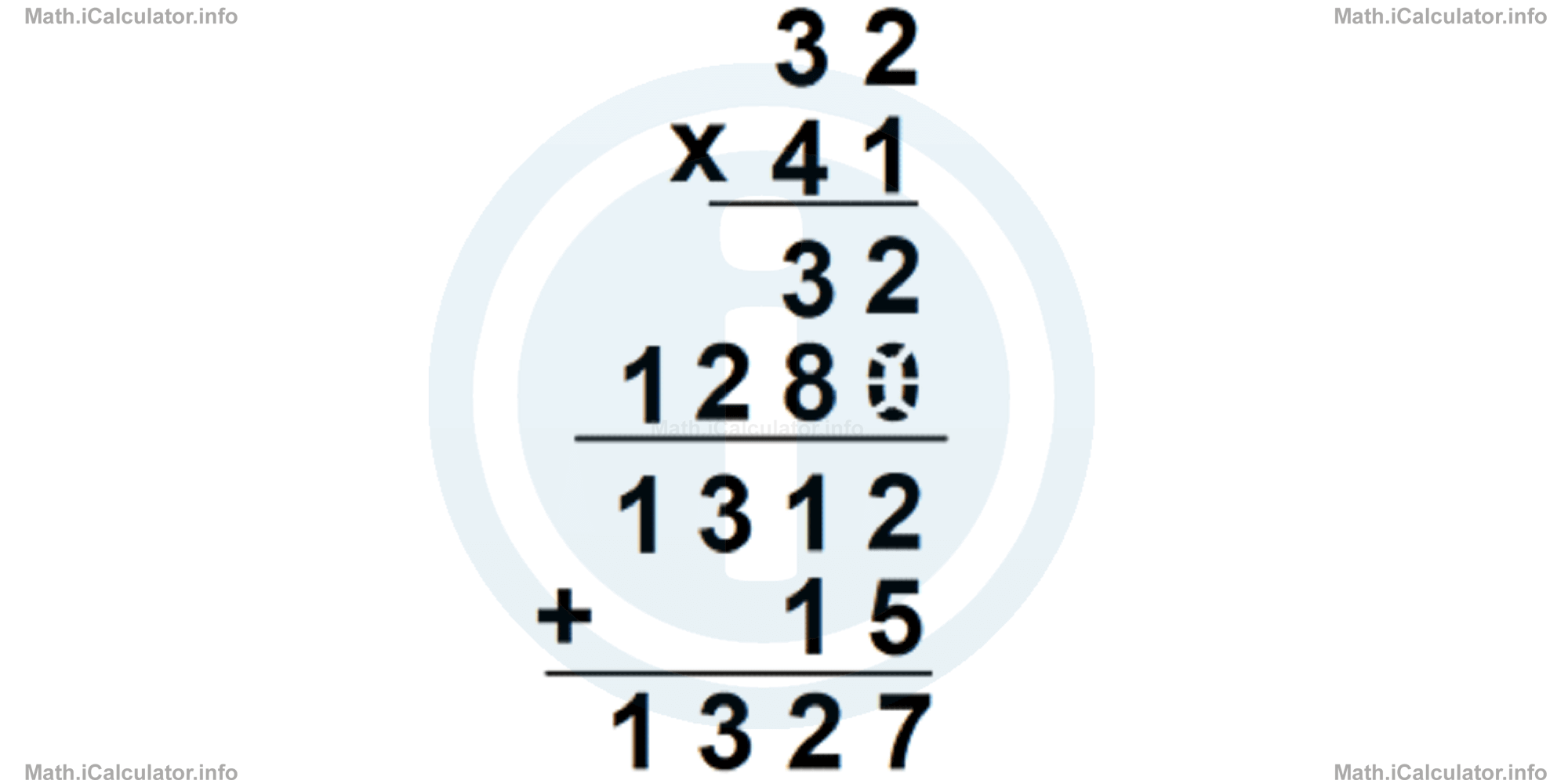
Hence, the solution is correct.
More Operations with Numbers and Properties of Operations Lessons and Learning Resources
Whats next?
Enjoy the "Division" math lesson? People who liked the "Operations with Numbers and Properties of Operations lesson found the following resources useful:
- Division Feedback. Helps other - Leave a rating for this division (see below)
- Arithmetic Math tutorial: Operations with Numbers and Properties of Operations. Read the Operations with Numbers and Properties of Operations math tutorial and build your math knowledge of Arithmetic
- Arithmetic Video tutorial: Operations with Numbers and Properties of Operations. Watch or listen to the Operations with Numbers and Properties of Operations video tutorial, a useful way to help you revise when travelling to and from school/college
- Arithmetic Revision Notes: Operations with Numbers and Properties of Operations. Print the notes so you can revise the key points covered in the math tutorial for Operations with Numbers and Properties of Operations
- Arithmetic Practice Questions: Operations with Numbers and Properties of Operations. Test and improve your knowledge of Operations with Numbers and Properties of Operations with example questins and answers
- Check your calculations for Arithmetic questions with our excellent Arithmetic calculators which contain full equations and calculations clearly displayed line by line. See the Arithmetic Calculators by iCalculator™ below.
- Continuing learning arithmetic - read our next math tutorial: Order of Operations and PEMDAS Rule
Help others Learning Math just like you
Please provide a rating, it takes seconds and helps us to keep this resource free for all to use
We hope you found this Math tutorial "Operations with Numbers and Properties of Operations" useful. If you did it would be great if you could spare the time to rate this math tutorial (simply click on the number of stars that match your assessment of this math learning aide) and/or share on social media, this helps us identify popular tutorials and calculators and expand our free learning resources to support our users around the world have free access to expand their knowledge of math and other disciplines.
Arithmetic Calculators by iCalculator™
- Arithmetic Expressions Calculator
- Decimal Hexadecimal Number Calculator
- Hexadecimal Decimal Number Calculator
- Hindu Arabic To Roman Numbers Converter
- Identifying Factors Number Calculator
- Least Common Multiple And Greatest Common Factor Calculator
- Prime Numbers Identifier
- Greatest Common Divisor Calculator
- Number Format Converter
- Math Powers
- Square Root Calculator
- Exponents Calculator
- Binary Calculator
- Binary To Decimal Calculator
- Common Factors
- Imperial Converter
- Imperial To Metric Converter
- Length Converter
- Metric Converter
- Metric Units Conversion Calculator
- Roman Numerals Converter
- Rounding Numbers Calculator
- Round To Nearest Multiple Calculator
- Sig Fig Calculator
- Unit Rate Calculator
- Weight Conversion Calculator